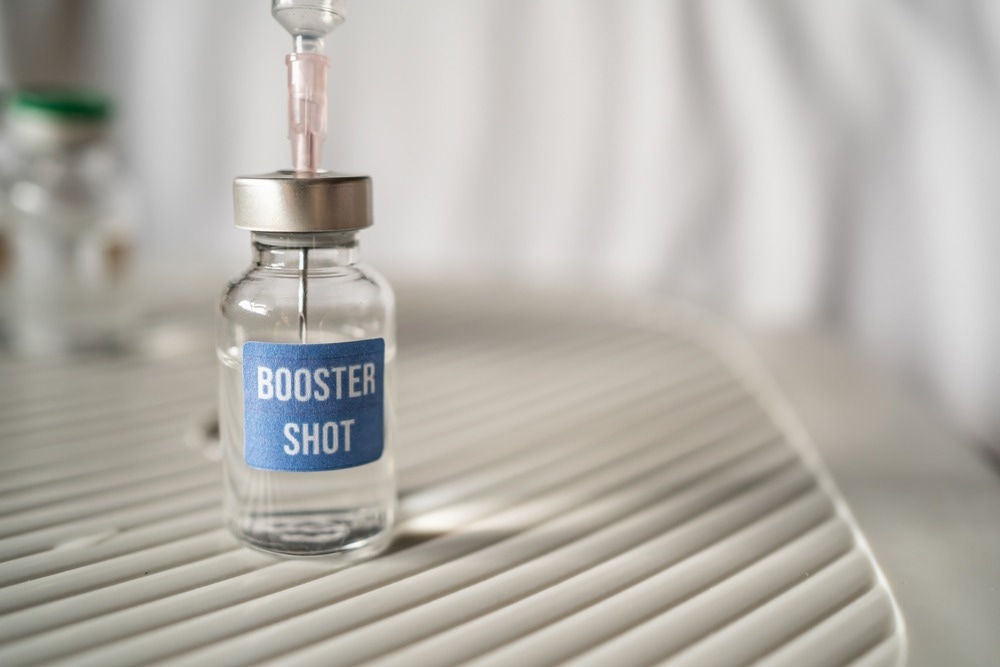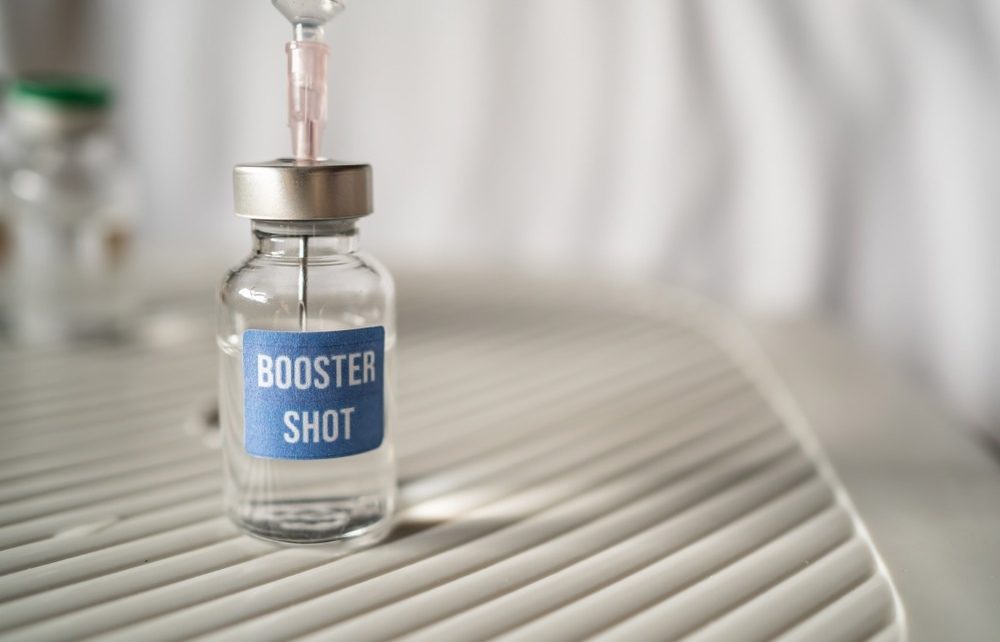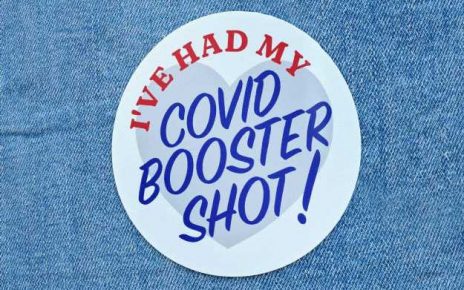In a recent study posted to the medRxiv* preprint server, researchers investigated whether the second booster dose of monovalent coronavirus disease 2019 (COVID-19) messenger ribonucleic acid (mRNA) vaccines increases antibody titers and neutralization potential against the severe acute respiratory syndrome coronavirus 2 (SARS-CoV-2) Omicron variant of concern (VOC) among NH (nursing home) residents and HCWs (healthcare workers).

Background
The Omicron variant is undergoing continuous evolutionary changes, giving rise to multiple subvariants with greater virulence and immune evasiveness. Omicron sub-VOCs, including the BA.1 sub-VOC, BA.2 sub-VOC, BA.2.12.1 sub-VOC, and BA.4/5 sub-VOC have emerged with greater transmissibility than the parent strain, challenging COVID-19 mitigation. COVID-19 vaccines have improved disease outcomes among nursing home residents; however, concerning newly emerged Omicron subvariants, a certain degree of uncertainty remains in terms of the optimal number of doses required and the dosing intervals for nursing home residents.
About the study
In the present study, researchers assessed immune protection conferred by the second booster (fourth dose) of monovalent COVID-19 mRNA vaccines against Omicron among individuals residing in nursing homes and HCWs.
The sample size comprised 367 and 60 nursing home individuals, and HCWs, respectively, from whom data were obtained between 23 August 2021 and 8 September 2022. The participants were sampled after the completion of primary COVID-19 mRNA vaccinations, first booster dose vaccination, and second booster dose vaccination to assess vaccine-elicited immunological responses.
Beaded-multiplexed immunological assays were performed to determine antibody titers against SARS-CoV-2 spike (S) protein and the receptor-binding domain (RBD) of SARS-CoV-2 Wuhan-Hu-1 or WT (wild-type) strain and the Omicron BA1 sub-VOC. In addition, SARS-CoV-2 neutralization assays were performed using lentiviruses pseudotyped with S protein sequences of the WT strain, Omicron BA.1 sub-VOC, and the Omicron BA.4/5 sub-VOC, and the pNT50 values were ascertained.
Additionally, the GMFR (geometric mean fold rise) and GMFC (geometric mean fold change) were calculated from before vaccine booster to after vaccine booster levels for every booster dose. The team included NH individuals vaccinated with COVID-19 vaccines such as Pfizer-BioNTech’s BNT162b2 or Moderna’s mRNA-1273 and excluded individuals vaccinated with Janssen’s Ad26.COV2.S vaccines. Individuals were administered the initial vaccine booster (third dose) eight to nine months post-primary vaccination and the subsequent booster four to six months post-initial boost.
Antibodies eBook

Samples were obtained at five different points in time, including the pre-initial booster period, at two weeks post-initial booster dose, at four to six months post-initial booster dose, two weeks post-subsequent booster dose, and three months post-subsequent booster dose. Individuals were analyzed if more than two samples across different points in time were provided.
Results
The median NH resident age was 75.0 years, 41.0% of the participants were female, and 78.0% were White. The median HCW age was 51 years, most of whom (57.0%) were women and White (82.0%). The antibody titers and neutralization capacity increased progressively with every booster dose but waned subsequently. NH individuals, with or without prior COVID-19 history, showed high GMFR values of 6.5 and 10.0, respectively, for anti-BA.1 neutralizing antibody titers post-subsequent booster dose administration.
Likewise, among SARS-CoV-2-naive and previously infected (with the BA.1 sub-VOC) individuals, GMFR values increased by 2.10 and 3.40 for antibodies against SARS-CoV-2 spike protein, and by 2.40 and 2.30, for antibodies against S RBD, respectively. Antibody waning was observed after four to six months of the initial booster dose, in the range of 70.0% to 95.0% for titers of binding antibodies and neutralizing antibodies.
The most noteworthy and strongest reductions in anti-Omicron S protein titers were observed from geometric mean titer (GMT) of 3771.0 to 509.0 AU/ml among nursing home residents with a previous history of SARS-CoV-2 infections (GMFC 0.1) and reduction in anti-WT RBD titers from GMT of 1704.0 to 300.0 AU/ml among previously SARS-CoV-2-infected nursing home residents (GMFC 0.02). In addition, a high GMFR was observed for the titers of anti-BA.5 neutralizing antibodies, with values of 9.0 and 7.0 among SARS-CoV-2-naïve and previously SARS-CoV-2-infected nursing home residents, respectively, post subsequent booster dose administration.
Similar findings were noted among the SARS-CoV-2-naïve and previously SARS-CoV-2-infected healthcare workers. Across groups and antibody titers, a noteworthy reduction was observed in GMT values from 2.0 weeks post-subsequent booster vaccination to 3.0 months post-subsequent booster vaccination, in the range of 50.0% to 95.0%. The most pronounced reduction in anti-Omicron S titers observed was from geometric mean titers of 2801.0 to 238.0 AU/ml among nursing home residents having prior COVID-19 history (GMFC 0.1) and a decrease in anti-WT RBD titers from GMTs of 2,109.0 to 167.0 AU/ml among previously SARS-CoV-2-infected nursing home residents NH (GMFC 0.1).
Conclusion
Overall, the study findings showed that the subsequent monovalent COVID-19 mRNA booster (fourth dose) vaccination restored immunity levels among nursing home residents and healthcare workers to levels equivalent to or higher post-initial booster (third dose) vaccination. Among the study participants, anti-Omicron neutralization titers waned significantly following the initial and subsequent COVID-19 mRNA booster dose administrations.
*Important notice
medRxiv publishes preliminary scientific reports that are not peer-reviewed and, therefore, should not be regarded as conclusive, guide clinical practice/health-related behavior, or treated as established information.
- Nugent, C. et al. (2023) "Second monovalent SARS-CoV-2 mRNA booster restores Omicron-specific neutralizing activity in both nursing home residents and health care workers". medRxiv. doi: 10.1101/2023.01.22.23284881. https://www.medrxiv.org/content/10.1101/2023.01.22.23284881v1
Posted in: Medical Science News | Medical Research News | Disease/Infection News
Tags: Antibodies, Antibody, Coronavirus, Coronavirus Disease COVID-19, covid-19, Health Care, Healthcare, immunity, Nursing, Omicron, Protein, Receptor, Respiratory, Ribonucleic Acid, SARS, SARS-CoV-2, Severe Acute Respiratory, Severe Acute Respiratory Syndrome, Spike Protein, Syndrome, Vaccine

Written by
Pooja Toshniwal Paharia
Dr. based clinical-radiological diagnosis and management of oral lesions and conditions and associated maxillofacial disorders.
Source: Read Full Article



